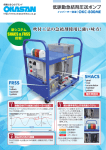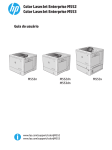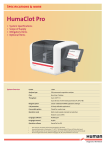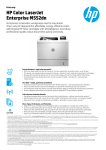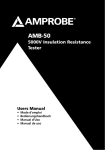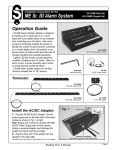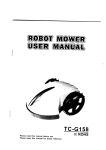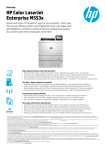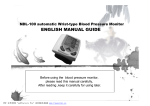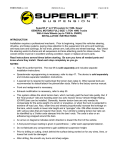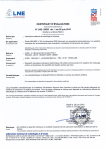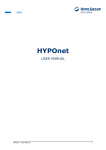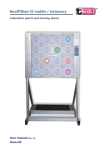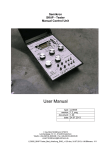Download Service Manual - Frank`s Hospital Workshop
Transcript
Service Manual
!"#$%&'()*"+,'-
Cat.-No.: 18680/2
!
%./01/02
1
2
3
4
5
6
7
8
9
REVISIONS
1.1
Software
1.2
Service Manual (Document)
INSTRUMENT VIEWS
INSTALLATION
3.1
Equipment
3.2
Technical Data
3.3
Safety Standard Approvals
OPERATION INSTRUCTION
4.1
Warm Up
4.2
Test Selection
4.3
Stop Watch
4.4
Calibration
4.5
Default Test Values
4.6
Measurement
4.7
Measurement Stop
4.8
Autostart
SERVICE
5.1
Service Functions
5.2
Total Default Values
5.3
Temperature Adjustment
5.4
Optic Adjustment
5.4.1
OD Correction
5.4.2
COAG CORRECTION
5.4.3
OPTIC CHECK
5.4.4
Interface RS232
TROUBLESHOOTING GUIDE
DISASSEMBLY / ASSEMBLY
7.1
Disassembling the Instrument
7.2
Assembling the Instrument
SPARE PARTS
TECHNICAL DRAWING (3D-EXPLOSION)
4
4
4
5
7
7
8
8
9
9
9
10
10
11
12
12
12
13
13
14
15
16
16
16
17
17
18
20
20
23
24
25
03,4)5$67)&78()9&$+:
2/26
Service Manual HumaClot Junior
!"#$%$&
'()"*)+#)",+-.%*+*)#/%0)+1"$2"(+%$+%-*+)$-%#)-3+4#%5#+-5+*)#/%0%$&+-.)+621"7(5-+82$%5#9+:$+5#,)#+-5+)$*2#)
"+.%&.+()/)(+5;+4)#;5#1"$0)<+"((+="#$%$&*+"$,+#);)#)$0)*+-5+-)0.$%0"(+*";)-3+%$+-.%*+*)#/%0)+1"$2"(+12*>)+ ;5((5=),9+ ?)4"%#*+ -5+-.)+%$*-#21)$-+ 1"3+ 5$(3+>)+ 0"##%),+ 52-+ >3+ -#"%$),+ 4)#*5$$)(<+ "$,+ #)4("0)1)$4"#-*+12*-+0514(3+=%-.+%$*-#21)$-+*4)0%;%0"-%5$*9
@.)+ 621"7(5-+ 82$%5#+%*+ %$-)$,),+ ;5#+ 2*)+ =%-.+.21"$+4("*1"9+ A*+ -.)#)+ %*+ $5+ B$5=$+ -)*-+ -."-+ 0"$+ 5;;)#
0514()-)+ "**2#"$0)+ -."-+ 4#5,20-+ ,)#%/),+ ;#51+ .21"$+ >(55,+ =%((+ $5-+ -#"$*1%-+ .)4"-%-%*<+ A:CD<+ 5#+ 5-.)#
%$;)0-%52*+ ,%*)"*)*<+ "44#54#%"-)+ 4#)0"2-%5$*+ *.52(,+ >)+ -"B)$+ >3+ -.)+ %$*-#21)$-+ 54)#"-5#9+ :$+ 0"*)+ 5;
4("*1"+*4%((),+5$+-.)+%$*-#21)$-<+0()"$+=%-.+"+4"4)#+-5=)(+*5"B),+%$+EFG+>()"0.9
The !"#$%&'()*"+,'- is manufactured for HUMAN GmbH.
Company Address:
HUMAN GmbH
Max-Planck-Ring 21
D-65205 Wiesbaden
Germany
Contact:
Phone:
Fax:
e-Mail:
Internet:
Service Manual HumaClot Junior
+49 (0) 6122 9988-0
+49 (0) 6122 9988-100 (or - 99)
[email protected]
http://www.human.de
3/26
;) <1=>2>./2
;?;)
2'8(@$-7
<7A?
C 5.14
;?E)
<7#$-:
Test adaptations
For PC/AT3/DD
First release
27-A,D7)B$+"$&)FG'D"#7+(H
<7A?
1
4/26
B'C,8,D$(,'+
<787-7+D7)2'8(@$-7
<7#$-:
C 5.14
First edition
Service Manual HumaClot Junior
E) >/20<IB1/0)=>1J2
Display
Keyboard
!"#$%"&
Reagents
Optic
Figure: Front view
Screws (2) to
open instrument
Serial No.
Figure: Rear view
Interface for printer
or data transmission
DC-Input 12V/1A
Sub D9 pole
Pin 2 data send
Pin 3 data receive
Pin 5 ground
Service Manual HumaClot Junior
5/26
!"#$%&'()*"+,'-
On/Off
Optic start
Cursor up
Cursor down
Timer / Stopwatch
Enter
Test
Menu
Service / Mailfunction
Ready to use
Optic channel
Figure: The Front panel
6/26
Service Manual HumaClot Junior
K) >/20LMML0>./
No special precautions are necessary when starting up the !"#$%&'() *"+,'-. However, the following is
recommended:
!
!
!
!
Place on a level surface in an area free from excessive temperature fluctuations.
Avoid vibration during measurement.
Protect the instrument from direct sunlight, moisture and dust.
Check that the voltage and frequency data on the identification plate of the instrument agree
with the local power rating before starting the instrument for the first time.
The instrument is connected to the power supply by the mains cable (supplied). If obvious damage has occurred
during shipping, C')+'()"47. Contact your local distributor for replacement or repair.
K?;)
1N",5#7+(
Standard delivery package
! 1 Pc
! 1 Pc
! 25 Pcs
! 5 Pcs
! 5 Pcs
! 1 Pc
! 1 Pc
! 1 Pc
! 1 Pc
!"#$%&'()*"+,'Power supply
Single cuvettes
Reagent tubes Ø 22.5 mm
Reagent tubes with cap Ø 16.0 mm
Reagent adaptor Øa 23.4 / Øi 16.0 mm
Reagent adaptor Øa 24.1 / Øi 22.6 mm
Operating manual
Warranty card
Consumables:
Human
REF
Product
Content
18690
19120
19130
19910/20
Single cuvette
Pipette, 5 µL – 50 µL
Pipette, 20 µL – 200 µL
Pipette tips 2 - 200 µL
500
1
1
1.000
Service Manual HumaClot Junior
7/26
K?E)
07D3+,D$&)G$($
Dimensions (LxBxH):
205 x 150 x 75 cm
Weight:
0.51 kg (without power supply)
Ambient Temperature:
18 - 23°C
Power Supply
Input : 90-264 V~ Output : 12 V, 1.0 A
Device:
Micro controller board
14 Bit ADC ; on-chip controlling of LCD,
RS232, keyboard, charging,
temperature, optic.
Interface:
Serial - 2400 baud, 8 bits, 1 stop, no parity
used in print or debug mode.
Optic Cell:
Photometer with pulsed 400 nm LED
Variable pulse modulation
Variable detector amplification
Linear range 0.001 - 1.000 OD
Keyboard:
Foil keyboard with 8 keys and 2 LED's
Display:
2 lines x 16 characters, liquid crystal
Incubation block:
1 measuring, 8 sample, 2 reagent wells; warmed to 37°C.
K?K)
2$87(O)2($+C$-C)L55-'A$&4
Manufacturer fulfills 1/)>2.)PQQ;REQQQ and 1/)>2.);KSTUR;;VEQQQ
8/26
Service Manual HumaClot Junior
S) .W1<L0>./)>/20<I%0>./
This section provides general instructions necessary for the user to achieve maximal use and benefit from the
!"#$%&'()*"+,'-. For specific test applications refer to sections in the user manual.
S?;)
J$-#)I5
The first visible screen gives the operator the information of the installed software before changing to the warmup screen.
Info screen:
Software revision
(here: Rev. C 5.14)
SOFTWARE C 5.14
PT:
000
PT:
000
Red LED lights:
It takes approx. 5 minutes
°
for the instrument to equilibrate to 37 C
Green LED lights:
The !"#$%&'()*"+,'- is
ready to operate.
(active test stop watch)
During the warm-up period no functions are available. The hidden service - menu can, however, be activated
during the warm-up period (refer to section "SERVICE“). The regular operator should not enter this menu.
S?E)
074()27&7D(,'+
Eight different tests can be performed on the !"#$%&'()*"+,'(PT, PTT, TT, FIB, FAC, DD, AT3, PC).
PT:
000
Enter test selection with the
:7O)X074(X?
TEST
PT:
Change active test with the
D"-4'-):7O4.
FIB:
000
Confirm active test with the
:7O)X1+(7-X.
To alternate among the tests, press key X074(X to activate test selection, D"-4'-):7O4 to change and key 1+(7to confirm?
Service Manual HumaClot Junior
9/26
S?K)
2('5)J$(D3
A stop watch function helps the operator to control the correct incubation times.
PT:
123
Stopwatch
To start the stopwatch press the :7O)X0,#7-X?
To stop and reset press the :7O)X0,#7-X again.
S?S)
%$&,9-$(,'+
The specific parameters for the tests can be entered into the !"#$%&'()*"+,'-)and stored.
PT:
PT:
PT:
PT:
PT:
PT:
000
Enter calibration with the
:7O)XB7+"X?
Change parameter
with the D"-4'-):7O4.
Confirm with X1+(7-X
ISI
1.12
Change parameter (100% value = Normal value)
with the D"-4'-):7O4.
Confirm with "1+(7-X
PT (100%)
12.0
Change parameter (50% value)
with the cursor keys
PT (50%)
16,7
Change parameter (25% value)
with the D"-4'-):7O4
(0,0 s = no calculation to % activity)
PT (25%)
25,0
000
active test is
calibrated.
?)1"#BH+ @.)+ %$42-+ 5;+ /"(2)*+ %*+ ,5$)+ >3+ 4#)**%$&+ -.)+ 24I,5=$+ B)3*<+ ;%#*-+ %$+ *-)4*+ 5;+ EF+ "$,+ -.)$+ =%-.
0."$&)+5;+,%#)0-%5$+%$+*-)4*+5;+E
10/26
Service Manual HumaClot Junior
S?U)
G78$"&()074()=$&"74
PT:
ISI = 1.10
(1) 100% (Normal) = 12.8 s
(2) 50% = 16.7 s
(3) 25% = 25.0 s
PTT:
Normal = 30.0 s
TT:
Normal = 15.0 s
FIB:
(1) 300 mg/dL = 12.0 s (2) 150 mg/dL = 23.0 s
FAC:
(1) 100% = 32.5 s
DD:
(1) 1600 ng/ml = 150 mE
AT:
(1) 100% = 400 mE
(2) 50% = 800mE
(3) 1% = 1100 mE
PC:
(1) 100% = 62 mE
(2) 50% = 23 mE
(3) 1% = 3 mE
Service Manual HumaClot Junior
(2) 10% = 60.0 s
(3) 75 mg/dL = 36.0 s
(3) 5% = 70.0 s
(2) 200 ng/ml = 30 mE (3) 0 ng/ml = 0 mE
11/26
S?Y)
B7$4"-7#7+(
Reconstitute reagent according to the reagent description and pre-warm (if required) in the reagent positions of
the instruments. Insert the cuvettes in the incubation area (6 positions) and pipette the required volume of
plasma into the cuvettes. To start a measurement, place the specific cuvette in the “Optic” position.
PT:
000
Activate the optic with the
:7O)X.5(,DX?
PT:
WAIT !
000
This screen appears only for a few seconds
and switches automatically to next screen
PT:
ACTIVE
000
the measurement starts automatically with the addition
of reagent. In case of problems: press the key X.5(,DZ to start
PT: !!!!
0.023
000
PT:
12.8 s
000
I = 1,04 % = 00
The measurement is running.
Don’t touch the cuvette during a run!
The value in the second line shows the optical density [OD].
If a clot is found, the result is displayed
and printed (if printer is connected)
(% = 00, if 25% value is set as zero !!!)
Note: Once started a faint beeping sound is followed by a scrolling arrow. The current light absorbance (OD) can
be read on the display. Avoid contact with the cuvette while this message is shown. A beeping sound will be
heard again if a clot-reaction was detected and the result will be displayed. If a printer is attached, the result will
be also printed. If the clot reaction takes more than the maximum reading time of 300 s, the optic will stop and
display „+++.+“, which means „no clot detected“.
S?[)
B7$4"-7#7+()2('5
The measurement can be canceled at any time by pressing the key X.5(,DZ again.
S?T)
L"('4($-(
The measurement will start automatically when the reagent is added, if the optic is set to active. For the some
tests ( i.e. fibrinogen, thrombin ) this feature does not work properly because the change in the signal is too
small. In this case, inject the reagent quickly and with more force into cuvette and/or press the key Z'5(,D\
again.
12/26
Service Manual HumaClot Junior
U) 21<=>%1
JL</>/]
W&7$47)-7$C)(3,4)47D(,'+),+),(4)7+(,-7(O)5-,'-)(')'57-$(,+6)'+)(37)!"#$%&'()*"+,'-?)>+)'-C7-) (') 7+4"-7
$DD"-$(7)$+C)-7&,$9&7)57-8'-#$+D7)'8)(37),+4(-"#7+(^)'+&O)$"(3'-,47C)57-4'++7&^)43'"&C)57-8'-#)$+O
47-A,D7)8"+D(,'+4)'+)(37)!"#$%&'()*"+,'-),+4(-"#7+(?
U?;)
27-A,D7)_"+D(,'+4
To enter the hidden service submenu, press :7O)X0,#7-X and):7O)X1+(7-X simultaneously.
WAIT FOR 37°C
key "0,#7-" ` "1+(7-"
PT:
LOAD DEFAULT ?
NO
000
The following service procedures can be performed on the !"#$%&'()*"+,'-R
<747()(')C78$"&()A$&"74
07#57-$("-7)$Ca"4(#7+(
.GbD'--7D(,'+
%'$6?bD'--7D(,'+
.5(,D)D37D:
27()<2EKE
Use the D"-4'-):7O4 to change and the :7O)X1+(7-X to confirm !
>+D'--7D()$Ca"4(#7+(4)@,&&),+8&"7+D7)(37)#7$4"-7#7+()4,6+,8,D$+(&Oc)d78'-7)D3$+6,+6)$+O(3,+6^)97)$@$-7
'8)(37)D'+47N"7+D74c
Service Manual HumaClot Junior
13/26
U?E)
0'($&)G78$"&()=$&"74
The !"#$%&'()*"+,'- can store test and system parameter permanent on board.
Calibration PT:
= 12.8 s
= 16.7 s
= 25.0 s
Calibration PTT:
Normal = 30.0 s
Calibration PT:
Normal = 15.0 s
Calibration FIB:
(1)
(2)
(3)
300 mg/dL
150 mg/dL
75 mg/dL
= 12.0 s
= 23.0s
= 36.0 s
Calibration FAC:
(1)
(2)
(3)
100%
10%
5%
= 32.5 s
= 60.0 s
= 70.0 s
Calibration DD:
(1)
(2)
(3)
1600 ng/ml
200 ng/ml
0 ng/ml
Calibration AT3:
(1)
(2)
(3)
100%
50%
1%
= 400 mE
= 800 mE
= 1100 mE
Calibration PC:
(1)
(2)
(3
100%
50%
1%
= 62 mE
= 23 mE
= 3 mE
Temperature
OD Correction PT:
OD Correction FIB:
OD Correction FAC:
OD Correction PTT:
OD Correction DD:
OD Correction TT:
OD Correction AT3:
OD Correction PC:
Coag Correction PT:
Coag Correction FIB:
Coag Correction FAC:
Coag Correction PTT:
Coag Correction DD:
Optic check (mw):
RS 232 Print Results
14/26
ISI = 1.10
(1) 100% (Normal)
(2)
50%
(3)
25%
= 150 mE
= 30 mE
= 0 mE
°C=370 (9040)
100
100
100
100
100
100
100
100
100
100
100
100
100
mw = approx. 11500 (range from 10xxx to 13xxx)
Integration time: approx 013 (from 011 to 020)
(Data->RS232 = NO)
Service Manual HumaClot Junior
U?K)
07#57-$("-7)LCa"4(#7+(
The incubation block of the !"#$%&'()*"+,'- should maintain a temperature of 37,2 °C.
When the green LED is on, fill a reagent tube with 1 ml water and place it in a reagent position. Place a (digital
thermometer in the reagent tube and allow to warm up for approx. 10 min. before reading the temperature.
SET TEMPERATURE
°C=371 (9085)
Example: The current temperature is 37,1°C and the digital target value is 9085.
Compare the temperature displayed by the system and the thermometer. If the temperature is different, adjust
the temperature on the !"#$%&'()*"+,'- by pressing the Up/Down cursor keys
Wait until a stable temperature of 37.0°C is displayed on the !"#$%&'()*"+,'-. Check and correct the system
temperature if not equivalent to the external thermometer.
Use the Up / Down keys to increase or decrease of temperature
Service Manual HumaClot Junior
15/26
U?S)
.5(,D)LCa"4(#7+(
U?S?;)
.G)%'--7D(,'+
OD-CORRECTION
;QQ
PT =
The optical density measured by the instrument can be corrected by a factor for each test. Therefore it is
possible to adapt other reagents.
(OD-Correction = 100 ! optical density * 1.00 -> no effect)
(OD-Correction = 120 ! optical density * 1.20)
OD-CORRECTION 97&'@);QQ)will cause:
- longer clotting times
- reduce sensitivity of the method ( more results will showas +++.+ s )
OD-CORRECTION $9'A7);QQ will cause:
- shorter clotting times
- increase sensitivity of the method, which can cause wrong results (short-time results !!!! )
JL</>/])R).Gb%.<<1%0>./)43'"&C)97)@,(3,+)UQ)b);UQ
special : OD-CORRECTION for fibrinogen test
Run a 300 mg/dL calibrator. The result should be close to 10 s. If it is above/below 10 s, in-/decrease the ODCORRECTION slightly.
U?S?E) %.L])%.<<1%0>./
With the COAG CORRECTION the instrument can correct the result for better correlation to other systems or
reagents.
Example: On another instrument a plasma sample measures with PT = 12.1 seconds; on the HumaClot Junior
the result is 11.0 seconds. To get equal results, the result has to be corrected by factor of 1.10 (+10%).
This can be done by entering COAG CORRECTION = 110 (Factor 1.10).
COAG-CORRECTION
;QQ
PT =
16/26
Service Manual HumaClot Junior
U?S?K) .W0>%)%!1%e
The OPTIC CHECK is recommend, if problems with measurements arise. Remove the cuvette from optic.
OPTIC CHECK
mw = ;;KEK
Q;S
The HumaClot Junior has adjusted this optic value (mw) to 11323 at an amplification (amp) of level 14.
Control range:
(ensure that no cuvette is placed in the optic)
#@R
$#5R
;QQQQ)f);KQQQ
;Qb;T
Press key “menu” to repeat the optic check, or the up/down keys to change the amplification.
U?S?S) >+(7-8$D7)<2EKE
The interface can used in two ways:
Print Mode ! Results are printed
Debug Mode ! Reaction curve can be portrayed on a PC
DATA ! RS232
NO
(NO ! Print Mode ; YES ! Debug Mode)
The interface port is set to 2400 Baud, 8 Bits, 1 Stop, No parity
W-'('D'&R))))B;))tab )/<))tab))0120))tab))21%))tab )#.G))tab))g))tab))>/<))tab))I+,()))M_
1h$#5&7)'8)$)-74"&(4)5-,+('"(R
01
PT:
12.5 s
I = 1.03
run #01
02
PT:
13.2 s
I = 1.35
run#02
03
PT:
12.8 s
I = 1.22
run#03
04
PT:
12.6 s
I = 1.04
Service Manual HumaClot Junior
run#04
17/26
Y) )0<.IdM12!..0>/])]I>G1
/'(7)R L&@$O4)A7-,8O),+4(-"#7+()57-8'-#$+D7)9O)(74(,+6)$55-'5-,$(7)D'+(-'&)4$#5&74
2O4(7#)1--'-)B744$67
>+(7-5-7($(,'+)$+C)D'--7D(,A7)$D(,'+
.5(,D)_$,&"-7)c
The !"#$%&'() *"+,'- is not operating in accordance with its optical
specifications.
This can happen, if
- there is not sufficient light (i.e. with very turbid reagents or lipemic samples).
Change to HUMAN reagent . Avoid extreme samples.
- there is too-intense light (i.e. direct sunlight). Protect against sunlight.
- LED is burned out. Replace device.
B7$4"-7#7+() C'74) +'( The change in the signal is too small.
4($-()$"('#$(,D$&&O
This can happen with very clear reagents ( ie. fibrinogen, thrombin).
B7$4"-7#7+()4($-(4
,+D'--7D(&O
Try to pipette forcefully and quickly or start measurement by pressing the key
Z.W0>%\ after adding the reagent.
Signal noise and temperature drift can start the measurement incorrectly.
Stop the measurement and activate the optic shortly before starting.
Electrical power is not sufficient.
Use original power supply.
Charge battery pack, if used.
]-77+)<7$CO)M1G),4)'88 Temperature is out of range. Wait a few minutes. If the error persists, contact
technical service
07#57-$("-7)+'(
Adjust the temperature.
D'--7D(
```?`)4
Always repeat the sample to verify the result
X/')%&'()G7(7D(X
Possible reasons include the following
Clotting time is longer than 300 secs
Clotting time is shorter than 8 secs
Incorrect reagent
Fibrinogen level of sample is below 100 mg/dL ( i.e. sample dilutions )
Air bubbles
Debris in cuvette
Sample improperly collected
OD-Correction is set to zero
%&'((,+6)(,#7)('')43'-( Always repeat the sample to verify the result.
<7C)27-A,D7)M1G),4)'+
Possible reasons include the following:
Incorrect reagent
Air bubbles
Debris in cuvette
Sample improperly collected
Optic is incorrectly adjusted
Action:
Use recommended materials
Decrease OD Correction slightly
Increase OD Range
18/26
Service Manual HumaClot Junior
2O4(7#)1--'-)B744$67
%&'((,+6)(,#7)('')&'+6
Service Manual HumaClot Junior
>+(7-5-7($(,'+)$+C)D'--7D(,A7)$D(,'+
Always repeat the sample to verify the result.
Possible reasons includes the following:
Incorrect reagent
Air bubbles
Debris in cuvette
Low fibrinogen level
Sample improperly collected
Optic is incorrectly adjusted
Action:
Use recommended materials
Increase OD-Correction slightly
Decrease OD-Range
19/26
[) G>2L221BdMi)V)L221BdMi
Tools required: Phillips screwdriver, medium / small
[?;)
G,4$447#9&,+6)(37)>+4(-"#7+(
$H
$H
a) Remove the two EJOT screws M2,5x8 with screwdriver on the rear of the instrument
b) Move upper part towards the front against the base
c) The parts are now separated
CH
CH
7H
8H
CH
CH
d) Remove the four EJOT screws with the screwdriver
e) Remove the M3x6 screw with the ground cable
f) Unplug the keyboard cable from system board connector
g) Lift up the complete inner assembly from the top case
20/26
Service Manual HumaClot Junior
h) Remove the four screws from the display and unplug the cable
3H
3H
,H)
,H
i) Lift up the complete heating block away from the system board sockets and spacers.
!7$(,+6)8',&
07#5?
47+4'-
))))))).5(,D)9&'D:
]-'"+C,+6)D'++7D(,'+4
Service Manual HumaClot Junior
21/26
DC Input
RS232
Microcontroller
System board
Keyboard connection
Microcontroller
Ground
Battery
DC Input
'()*+,-./+0
+/11#+)*/12
RS232
TTL
22/26
Service Manual HumaClot Junior
[?E)
L447#9&,+6)(37)>+4(-"#7+(
!
Assembling of the instrument is the reverseof disassembly.
!
Carefully put together the components, fixing (tightening them firmly.
!
After complete assembly of all components, connect the external power supply and switch on the
instrument.
!
Run basic function tests (checking dialogue).
!
Simulate measurement without reagent. Start the optic and stop after approx. 15 seconds with a pencil
inserted into the optic channel. This will stop the measurement and show the virtual result.
!
If the system board, heating components or microcontroller has been changed, a temperature check
should be done before the final QC (Quality Control) procedure.
Service Manual HumaClot Junior
23/26
T) 2WL<1)WL<02
!"#$+
<1_
24/26
W-'C"D()C74D-,5(,'+
;TYT;V;
;TYT;VE
;TYT;VK
;TYT;VS
;TYT;VU
;TYT;VY
;TYT;V[
;TYT;VT
;TYT;VP
;TYT;V;Q
;TYT;V;;
;TYT;V;E
;TYT;V;K
;TYT;V;S
;TYT;V;U
;TYT;V;Y
;TYT;V;[
;TYT;V;T
;TYT;V;P
;TYT;VEQ
;TYT;VE;
;TYT;VEE
;TYT;VEK
;TYT;VES
;TYT;VEU
Power supply 90-264 Vac/12 Vdc - EU
Power supply 90-264 Vac/12 Vdc - US
System board
LCD display cpl.
Spacer M2,5 L12
Spacer M3 L9 (for system board, top)
Optic block cpl.
Temperature sensor cpl.
Cable RS232
Cable DC-Input
Cable ground
Heating foil 5V, 1W
Casing cpl.
Type label
Mounting plate
Fastening angle
Heating block
Foil keyboard
Reagent adapter da=23,4 di=16,0
Reagent adapter da=24,1 di=22,6
Spacer M3 L6 (for system board, bottom)
Spacer M2,5 L32 (for display) (L12+L20)
Fixation package
Cardboard, white
Cardboard, inlay
;TYTQV;
;TYTQVS
;TYTQVE
User manual, english
Warranty card, english
Service manual, english
W'4,(,'+
'+)C-$@,+6
n/a
n/a
7
8
11
9
4
27
17
16
n/a
14
1
26
15
13
3
2
n/a
n/a
12
10/11
n/a
n/a
n/a
n/a
n/a
n/a
Service Manual HumaClot Junior
P) 01%!/>%LM)G<LJ>/])FKGb1jWM.2>./H
1 = Casing cpl.
2 = Foil keyboard
3 = Heating block
4 = Optic block cpl.
5 = Receiver board
6 = Transmitter board
8 = LCD display cpl.
9 = Spacer M3 L9
10 = Spacer M2,5 L20
11 = Spacer M2,5 L12
12 = Spacer M3 L6
18 = Screw M2,5x8
19 = Screw M2,5x6
20 = Washer M2,5
21 = Ejot screw 2,5x8
25 = Screw M2,5x5
Service Manual HumaClot Junior
25/26
7 = System board
13 = Fastening angle
14 = Heating foil
15 = Mounting plate
16 = Cable DC-Input
17 = Cable RS232
18 = Screw M2,5x8
27
19 = Screw M2,5x6
20 = Washer M2,5
22 = Ejot screw 2,5x6
23 = Screw M3x6
24 = Washer M3
26 = Type label
27 = Temp.sensor cpl.
26/26
Service Manual HumaClot Junior
Human
Gesellschaft für Biochemica
und Diagnostica mbH
Max-Planck-Ring 21 ! D-65205 Wiesbaden
Germany
Telefon:
+49 6122 9988 0
Telefax:
+49 6122 9988 100
eMail:
Internet:
01/2004-12
[email protected]
http://www.human.de





























